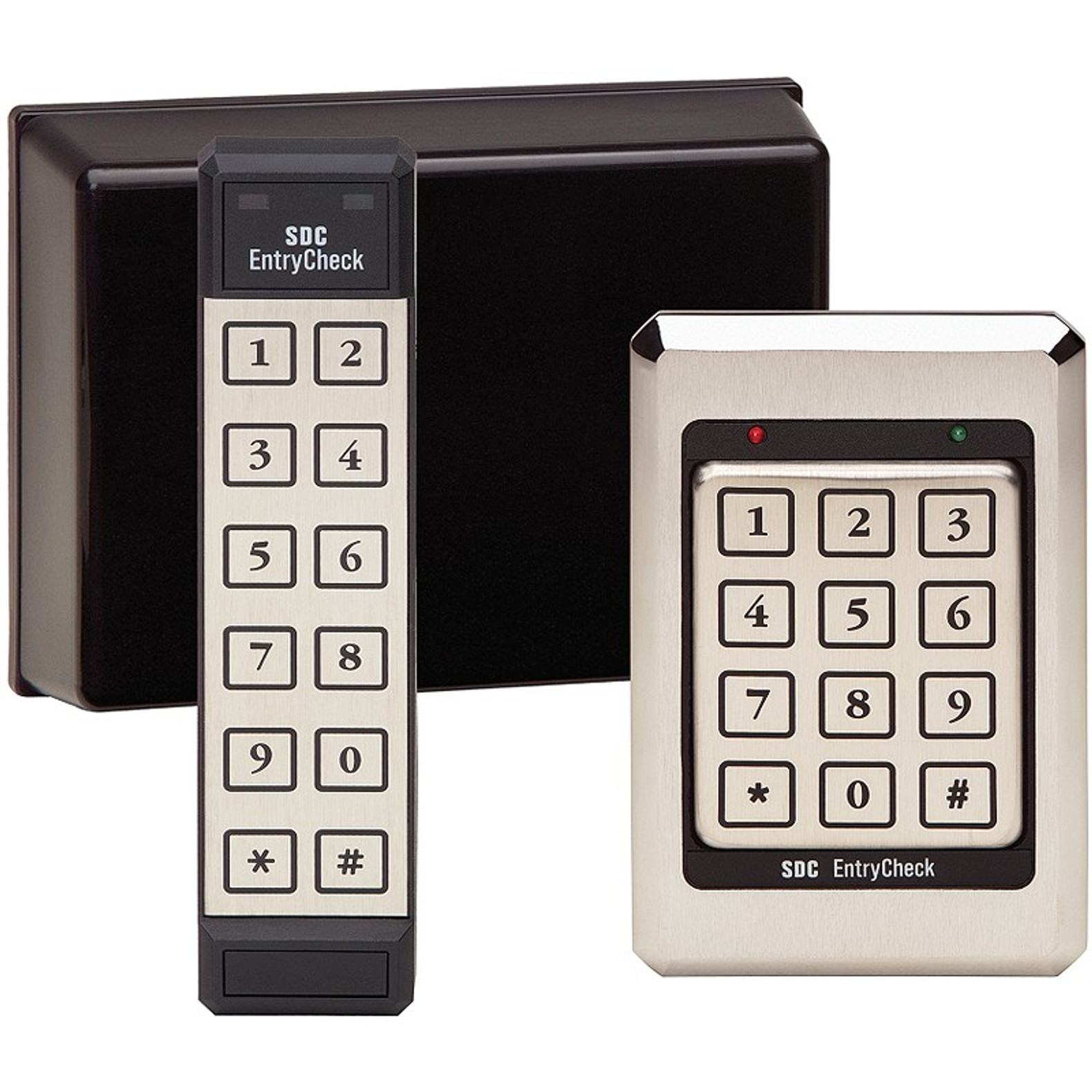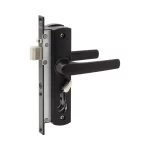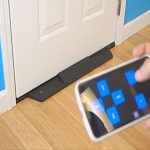The Basics of Security Door Controls
Understanding the fundamentals of security door controls is key. These systems safeguard entry points in homes, offices, and high-security areas. The main purpose is to allow authorized access while denying entry to unauthorized individuals.
Security door controls come in various types, each serving a unique function. Some control systems rely on traditional keys and locks, while others employ advanced technologies. Modern systems often include electronic mechanisms. They work by authenticating users through key cards, codes, or biometric identifiers. Once verified, the system allows entry.
At its core, a door control system integrates hardware and software components. These work together to create a security barrier. The hardware typically includes locks and readers. The software manages access permissions and monitors door status. Together, they form an effective defense against intrusion.
The efficiency of security door controls depends on proper installation and regular maintenance. Poorly installed systems might fail to provide the necessary protection. Regular checks ensure that all components work as intended.
For best performance, users should understand the basics. They must know how to operate the system and whom to contact for issues. Effective use of security door controls starts with good knowledge and responsible management.
Types of Security Door Control Systems
When considering security door controls, there are several types to choose from. Each offers unique features that cater to different security needs.
Electromagnetic Locks
Electromagnetic locks, or mag locks, use an electromagnetic field to secure a door. They consist of an electromagnet and an armature plate. When energized, the magnet binds to the plate, creating a strong holding force. These locks are fail-safe by design. They unlock when power is cut, ensuring exit in emergencies. They suit high-traffic areas due to their quick and easy operation.
Electric Strike Locks
Electric strike locks modify traditional lock mechanisms to enhance security. They replace the fixed strike faceplate often found in standard locks with a movable piece. This piece releases upon receiving an electrical signal. Ideal for controlled access, they work well with keyed and code-entry systems. Their versatility makes them a popular choice for various buildings.
Smart Locks and Access Control
Smart locks represent the evolution of access control. They integrate technology for improved functionality. Users can unlock doors using smartphones, key fobs or biometric verification. They offer convenience and customization. Access rights can be easily assigned or revoked, often remotely. Their audit trails provide records of who accessed a space and when. Smart locks are a must for tech-savvy spaces seeking high-level security with convenience.
Key Components of Door Security Systems
In every robust security door control system, there are essential components that work in tandem. Understanding these parts is helpful in optimizing your system’s effectiveness.
Controllers
Controllers act as the brains of the operation. They decide who gets access and who doesn’t. These devices verify user credentials, such as key cards or codes, before activating the lock mechanism. They can be standalone or networked for broader security management. It is imperative that they have reliable software for proper decision-making.
Sensors and Alarms
Sensors detect unauthorized attempts to access or tamper with the door. They trigger alarms that alert security personnel. They may also monitor door positions, ensuring they are closed or locked as needed. Installing quality sensors boosts overall security by deterring potential intruders.
Power Supplies
All electronic components in security door controls need power to operate. Power supplies ensure that the controllers and sensors remain operational, even in outages. Backup power sources, like batteries or generators, are critical for maintaining security during power failures.
Installation Considerations for Security Door Controls
When installing security door controls, several critical aspects ensure system effectiveness and reliability. Proper installation is essential for peak performance and security. Here are the key factors to consider:
Site Assessment and Planning
Before installation, evaluate the site. Identify which doors need security controls. Plan the type and location of each component.
Professional Installation
Security door controls involve complex systems. Always go for professional installers. They understand technical requirements and ensure correct setup.
Integration with Existing Systems
Many buildings have pre-existing security features. Make sure new controls work with these systems. Seamless integration is important for full security.
User Training
Once installed, train users. They should know how to operate the system and respond to alarms. Proper training avoids breaches from user errors.
Regular Testing
After installation, test the system regularly. Check all functions, from locks to alarms. Testing confirms everything works as it should.
By considering these factors, you can greatly enhance the security and functionality of your door control system. Remember that the quality of installation can impact the system’s effectiveness as much as the quality of the components themselves. Choose professional services and prioritize thorough planning for the best results.
The Role of Technology in Enhancing Door Security
The advancement of technology plays a crucial role in improving door security systems. Modern technologies offer more secure and convenient ways to manage access. These systems are not only harder to breach but also provide efficient and user-friendly solutions. They cater to the need for high-level protection while enhancing user experience. By integrating technological innovations, security door controls have become more adaptable and intelligent.
Biometrics
Biometric technology uses unique physical characteristics for access control. Fingerprints, facial recognition, and iris scans are common biometric identifiers. They provide a high level of security because they are unique to each person. Biometric systems reduce the risk of unauthorized entry due to lost or stolen keys. They are useful in areas requiring stringent access control. With biometrics, security door controls become more personal and secure.
Wireless and Remote Access
Wireless technology simplifies the installation and management of security door controls. Remote access systems allow control from anywhere, using a smartphone or computer. This flexibility means you can manage and monitor access in real time. It’s ideal for busy environments and for those who need to grant or revoke access quickly. Wireless systems also mean fewer cables, making installation cleaner and less intrusive.
Compliance and Legal Considerations for Door Security
When setting up security door controls, compliance with local laws and regulations is essential. Here are some vital points:
- Building Codes: Follow building codes related to security systems. They address installation standards.
- Privacy Laws: Comply with laws governing surveillance and privacy. These affect how you monitor access.
- Disability Access: Ensure systems consider disability access, complying with acts like the ADA in the U.S.
- Fire Safety: Security systems must not hinder evacuation. They should comply with fire safety regulations.
- Data Protection: When systems gather data, such as biometrics, follow relevant data protection laws.
Legal considerations can be complex. Always seek expert advice to ensure your security door controls meet all legal requirements. This will help avoid fines and enhance trust in the security system.
Trends and Future Developments in Security Door Controls
The landscape of security door controls is evolving rapidly. Advances in technology drive new trends and developments. Here’s what we can expect in the near future.
Integration with Smart Home Technologies
Smart home ecosystems are growing. Security door controls are integrating with these systems. Users will control doors using voice commands or mobile apps. This increases convenience and offers advanced monitoring.
Advanced Biometric Solutions
Biometric technology is advancing. Soon, we could see even more reliable and diverse identifiers. Vein patterns in hands or behavioral biometrics might be used. This will up the security game.
AI-Powered Analytics
Artificial Intelligence (AI) is making its way into door security. AI will analyze access patterns to detect anomalies. This will help prevent unauthorized entries more effectively. AI can send alerts or lock down areas if it detects unusual activity.
Internet of Things (IoT) Connectivity
IoT is connecting devices like never before. Door control systems will be part of vast networks. They will communicate with other IoT devices to enhance security and functionality.
Enhanced Encryption Methods
As cyber threats increase, door control systems will adopt stronger encryption. This will protect against hacking and ensure communication is secure. Users will trust systems more as a result.
The future of security door controls looks promising. Smart, interconnected, and intelligent systems are set to provide top-notch security while ensuring user convenience. Keep an eye on these trends as they develop and consider them for your security needs.
Maintaining and Troubleshooting Door Control Systems
To keep security door controls working well, regular maintenance and prompt troubleshooting are essential. Here’s how to maintain and address common issues effectively.
Regular Maintenance Schedule
Set up a routine checkup plan for your system. This should include testing locks, verifying access permissions, and updating software. Clean readers and keypads to ensure clear recognition of credentials. Check battery levels or backup power sources to avoid unexpected failures. A well-maintained system ensures reliability and longevity.
Troubleshooting Common Issues
When problems arise, act quickly to resolve them. If doors aren’t locking properly, check alignment and power connections. For access denials to authorized users, inspect card readers or biometric scanners for dirt or damage. Reset systems if software glitches occur. If issues persist, contact professional support without delay.
By staying on top of maintenance and being ready to troubleshoot, you can ensure that your security door controls remain effective and reliable. Remember, proactive care is the key to a secure and smoothly operating door control system.





